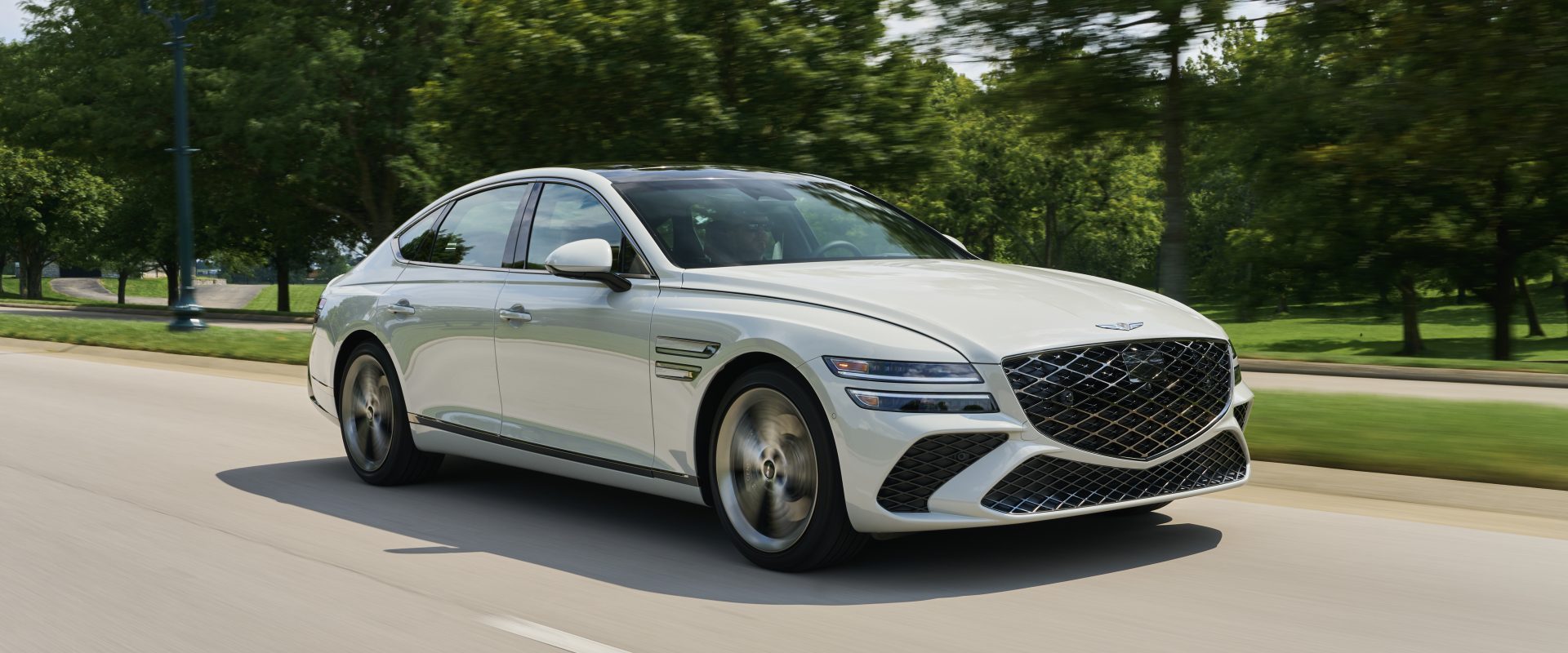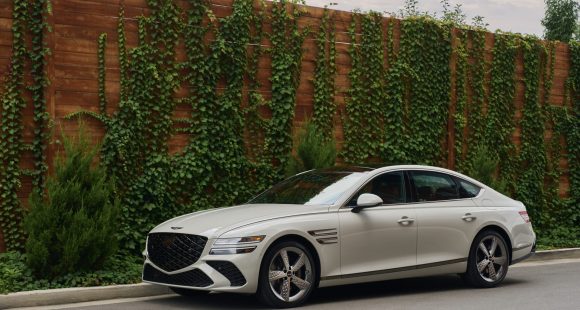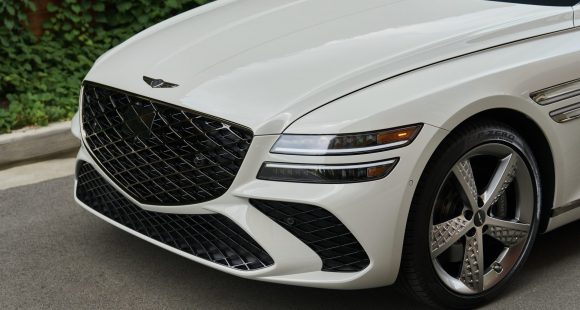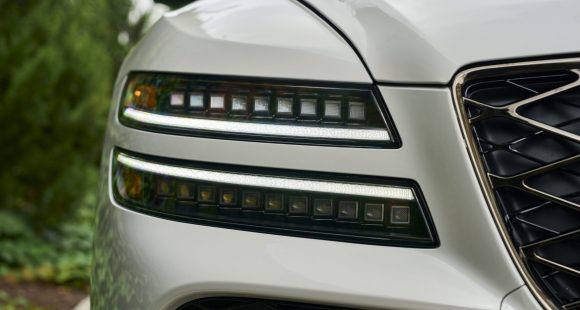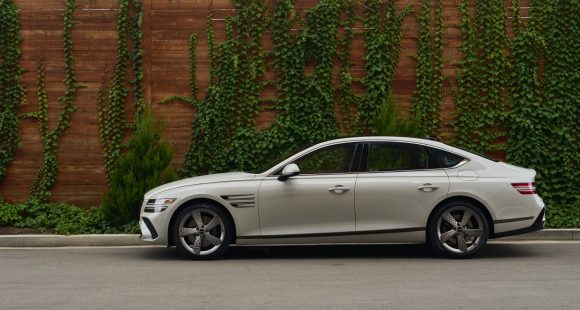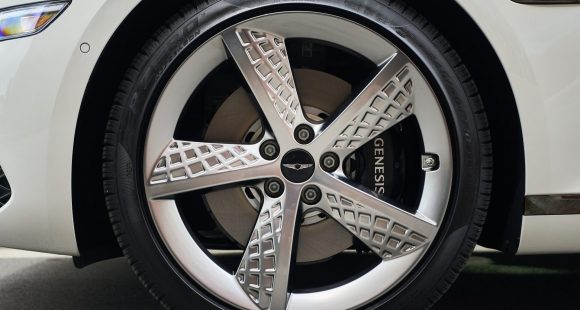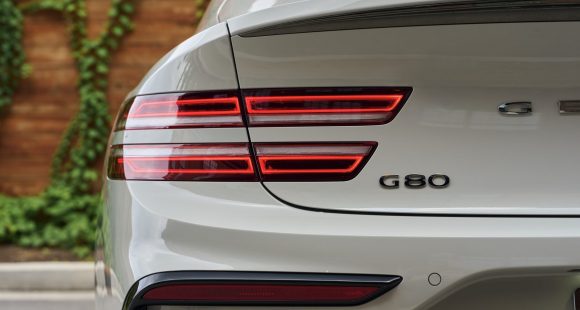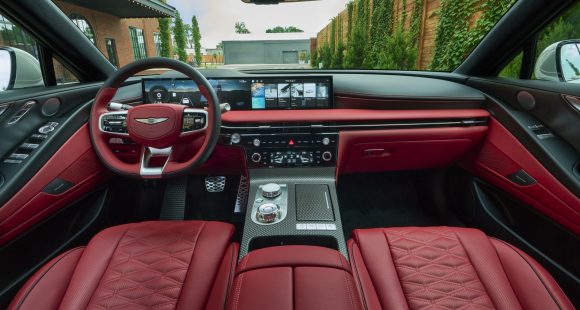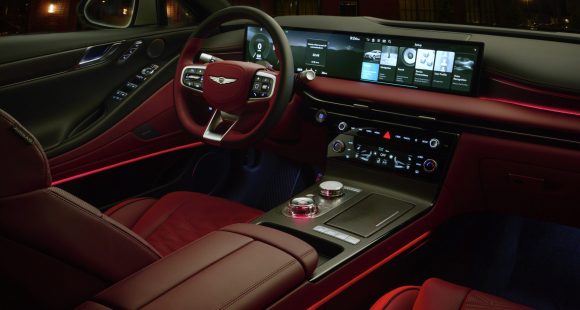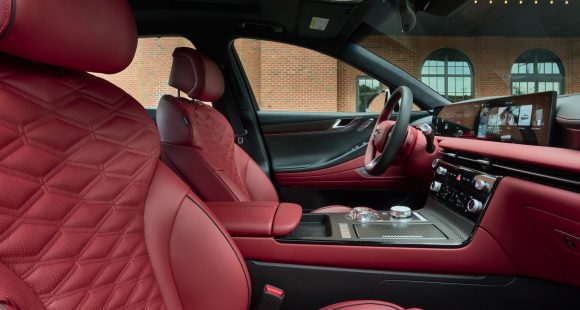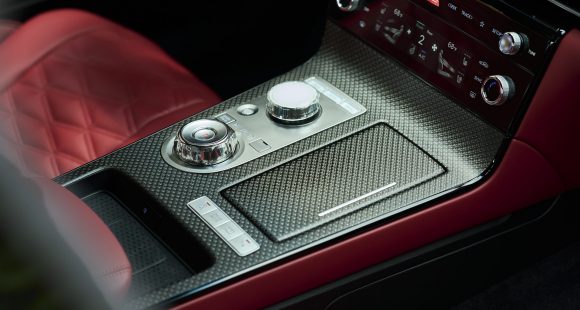2023 Alfa Romeo Stelvio Estrema
Alfa Romeo originally returned to the American market in 2008, but it was 2016’s Giulia sport sedan that marked the point in which they really got serious about selling cars in the US. And it was quickly followed up by the Stelvio SUV which has naturally become their best-selling model. So, what’s next? Well, it looks like Alfa is going to extreme measures to take the Stelvio to the next level.
The Alfa Romeo Stelvio arrived 5-years ago with a bang. Not only bringing a much welcomeD splash of Italian style to the small sporty luxury-minded crossover scene, but bringing the most power and highest performance we’d seen yet. For 2023, there’s a new option for buyers, the Alfa Romeo Stelvio Estrema AWD.
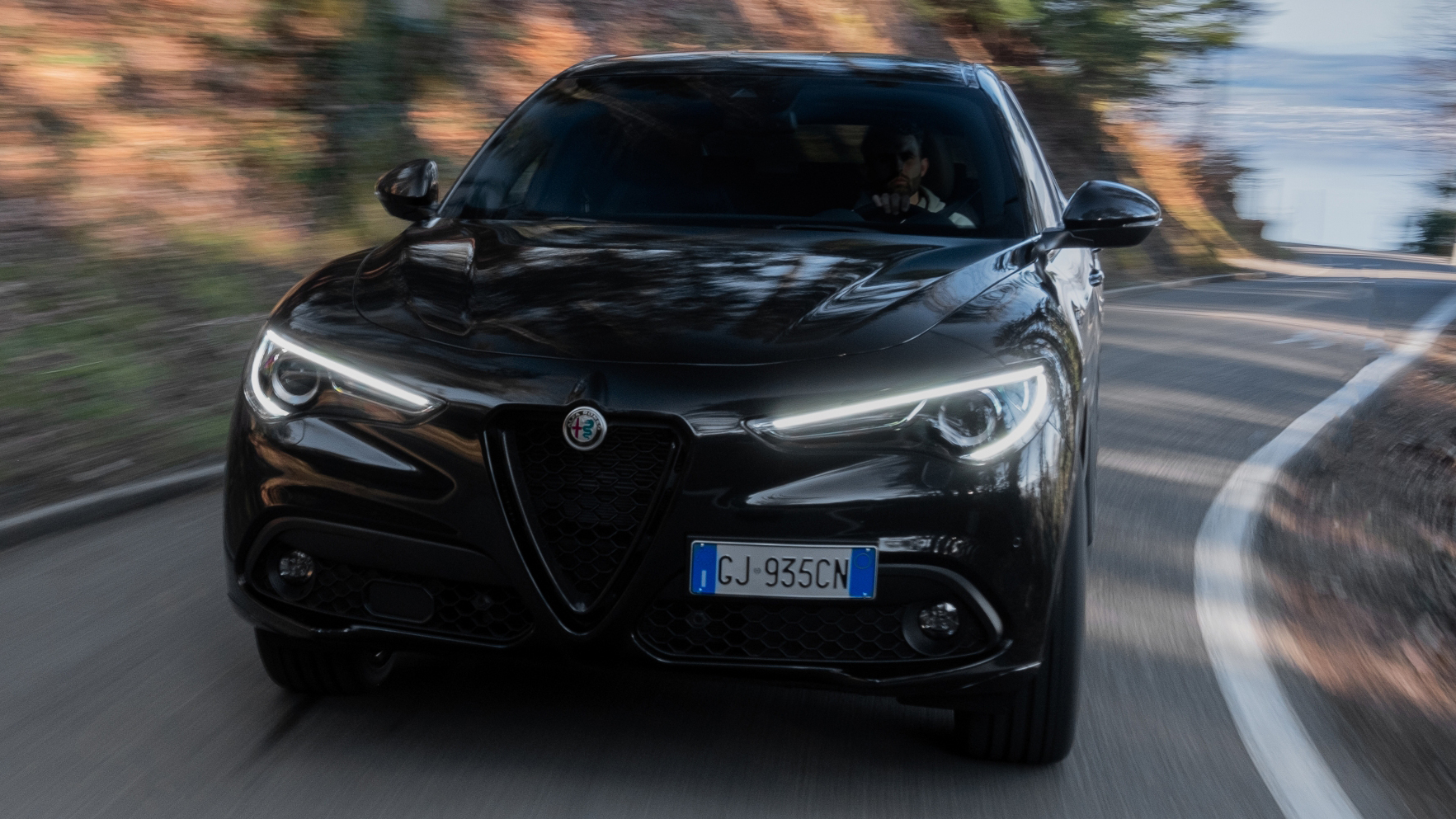 Starting with Veloce trim, the limited edition Estrema adds an adaptive suspension and limited-slip differential; essentially giving you some of the Quadrifoglio’s go-fast goodies without having to spend quite as much dough. It’s all integrated into their DNA drive mode setup, which Alfa says is tuned hand-in-hand with their Formula One team. The Estrema doesn’t get the Quad’s race mode, but Dynamic mode is quite aggressive; delivering a ride that’s about as firm as you’ll find in a production street vehicle. It can feel hyper, almost twitchy at times; seemingly unhappy tooling through commuter traffic, having higher speeds and freer flowing pavement on its mind.
Starting with Veloce trim, the limited edition Estrema adds an adaptive suspension and limited-slip differential; essentially giving you some of the Quadrifoglio’s go-fast goodies without having to spend quite as much dough. It’s all integrated into their DNA drive mode setup, which Alfa says is tuned hand-in-hand with their Formula One team. The Estrema doesn’t get the Quad’s race mode, but Dynamic mode is quite aggressive; delivering a ride that’s about as firm as you’ll find in a production street vehicle. It can feel hyper, almost twitchy at times; seemingly unhappy tooling through commuter traffic, having higher speeds and freer flowing pavement on its mind.
4 unique colors are available, including this Misano blue; and all Estremas get a new rear diffuser, unique 21-inch wheels, and additional black trim; plus, carbon fiber covers for the grille and side mirrors. They’ve added plenty of carbon-fiber inside as well; on the door panels, console, and dashboard; along with leather sport seats stitched up with the same red thread as the dash. All of the additions are well executed, and breathe new life into a space that was starting to look somewhat dated compared to the newest rivals.
Both rear seat space and cargo area at 18.5 cubic-ft. are tighter than most as well, though max capacity of 56.5 cubic-ft. compares better. Rounding out the list of upgrades in the Estrema are a dual-pane sunroof, wireless phone charging, and a 14-speaker Harmon Kardon audio system for cranking tunes.
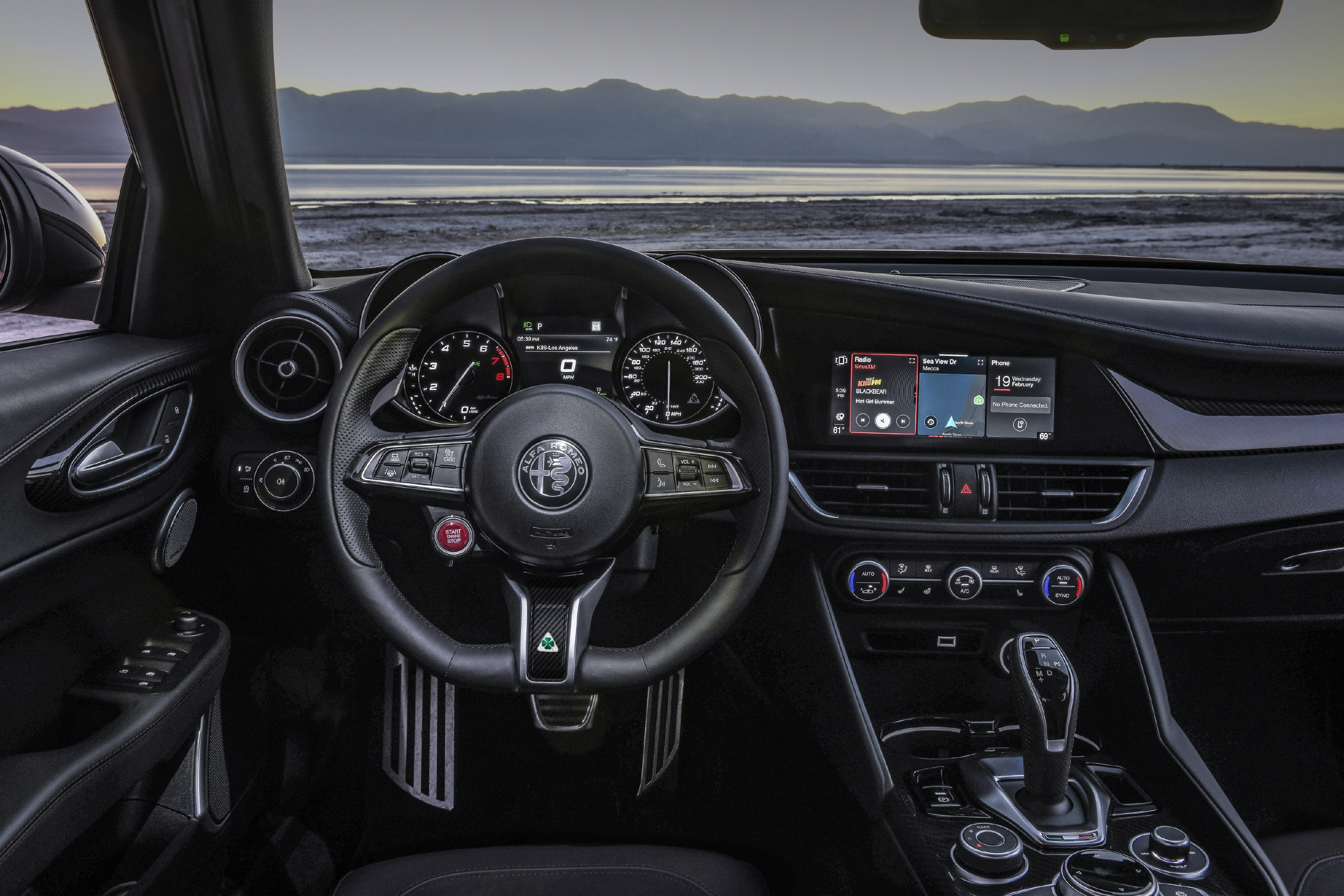 Cranking away under the hood is the standard Stelvio’s 2.0-liter turbo I4 engine. It may fall short of the Quadrifoglio V6’s 505-horsepower, but still pumps out an impressive 280-horsepower and 306 lb-ft. of torque to all four wheels through an 8-speed automatic transmission, which has some beefy aluminum paddle shifters mounted Italian style on the steering column.
Cranking away under the hood is the standard Stelvio’s 2.0-liter turbo I4 engine. It may fall short of the Quadrifoglio V6’s 505-horsepower, but still pumps out an impressive 280-horsepower and 306 lb-ft. of torque to all four wheels through an 8-speed automatic transmission, which has some beefy aluminum paddle shifters mounted Italian style on the steering column.
Unleashed at Mason Dixon Dragway, the Estrema, with its standard all-wheel-drive, has plenty of grip for a healthy launch; but from there, power delivery is more moderate than overwhelming, taking 6.3-seconds to hit 60. Shifts from the trans, whether triggered with those nice paddles or done automatically, are extremely smooth and barely noticeable. There’s not a lot of excitement inducing engine noise either, just a very calm and luxury-like cruise through the quarter in 14.5-seconds at 95 miles-per-hour.
Everything took a turn for the better when we turned through the cones of our handling course. Here is where this utility vehicle really shines, feeling absolutely great when it comes to handling performance. That ultra-firm suspension and hyper nature of Dynamic mode helps this Stelvio feel more like a sport sedan than just about anything else in the crossover world. Very little body roll, virtually no understeer or oversteer, and the perfect amount of feel through the steering wheel, made for an incredibly precise, spirited, predictable, and fun run through the cones.
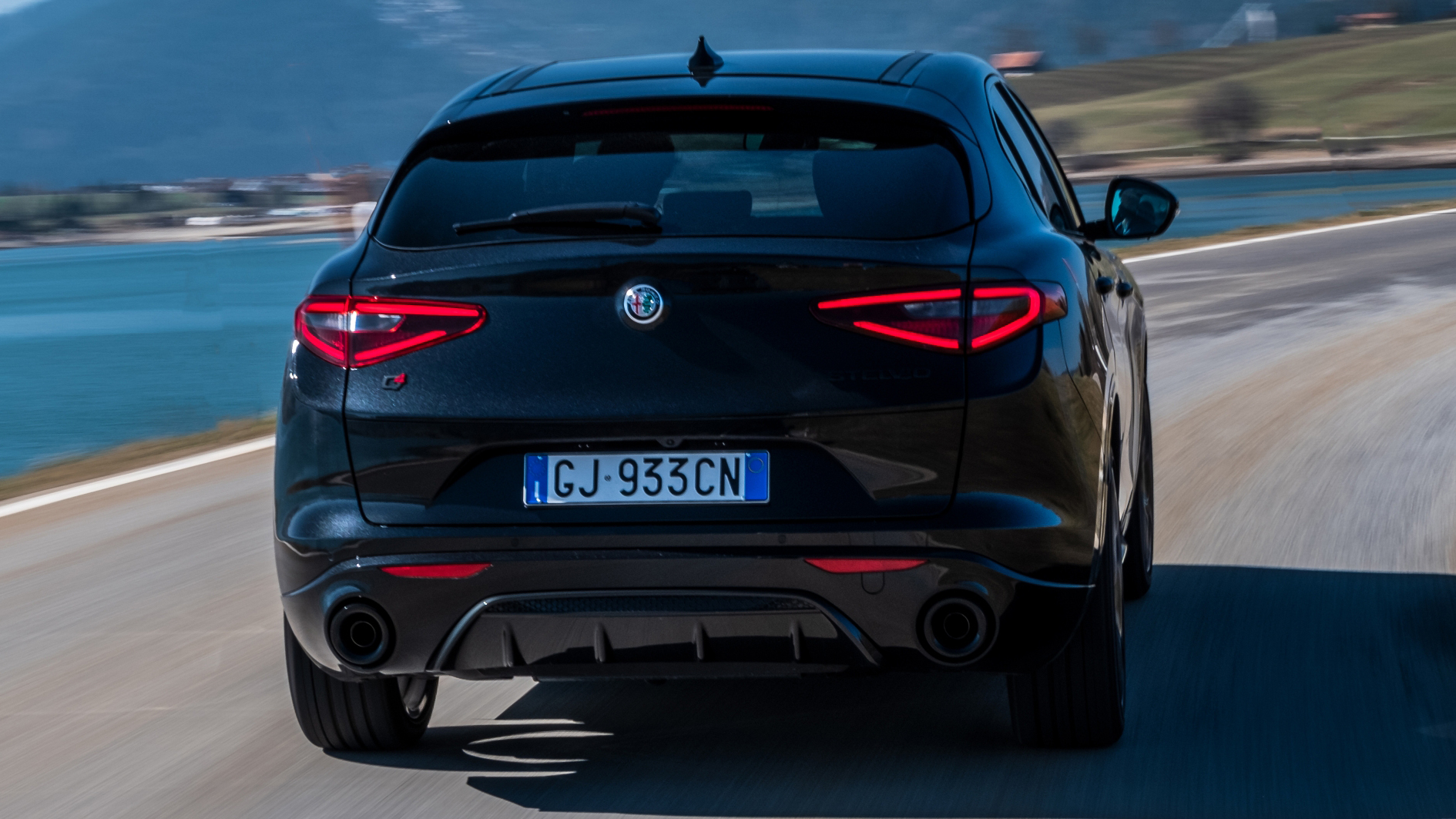 Brakes are by Brembo, but they’re not Quadrifoglio spec., and we felt substantial ABS pedal pulsing. Still, stops from 60 took only 113-feet; consistently staying straight and true, with only moderate nosedive.
Brakes are by Brembo, but they’re not Quadrifoglio spec., and we felt substantial ABS pedal pulsing. Still, stops from 60 took only 113-feet; consistently staying straight and true, with only moderate nosedive.
Government Fuel Economy Ratings are 22-City, 28-Highway, and 24-Combined. We averaged a spot-on 24.2 miles-per-gallon of Premium. Making for an average Energy Impact Score, using 12.4-barrels of oil yearly, with 6.0 tons of CO2 emissions.
Stelvio pricing begins at $48,170, and for that, you’ll get the same engine found here in the Estrema. It’s starting price of $60,920, slots it well below the top Quadrifoglio, yet gives you a healthy dose of its performance.
So, whether you call it style, character, panache; the 2023 Alfa Romeo Stelvio Estrema has it by the boat load; giving you a perfect option for increased handling performance without having to break the bank. It’s still beautiful to look at, unique to see out on the road, and now even more fun to drive on that road than ever!
Specifications
- Engine: 2.0L Turbo I-4
- Horsepower: 280
- Torque: 306 lb-ft
- 0-60 mph: 6.3 seconds
- 1/4 Mile: 14.5 seconds at 95 mph
- 60-0 Braking: 113 feet (avg)
- EPA: 22 City / 28 Highway / 24 Combined
- MW Fuel Economy: 24.2 mpg (Premium)
2025 Genesis G80
New Interior And New Tech Elevates G80 Sedan
Talk about bad timing. This second-generation G80 debuted at the height of a global pandemic. But that hasn’t stopped Genesis or this Bentley-on-a-budget sedan. In fact, since then, Genesis has unveiled a spectacular all-electric version and now given all G80s a makeover. So, let’s find out what a better and better-timed new G80 is ready to deliver.
Breaking into the luxury sedan scene requires going up against traditional brands with long pedigrees and legions of loyal buyers. But Hyundai has never shied away from a challenge, and has made steady progress with their Genesis brand, and hopes that a revised 2025 G80 midsize sedan will be their next step up.
Styling matters more when you’re the upstart, and the Genesis Athletic Elegance theme changes very little for ’25; just a new grille, slightly reshaped bumpers, new wheels ranging from 18 to 20 inches, and an updated color palette. The G80’s unique two-line LED headlamps get revised Micro Lens Array technology that boosts performance while minimizing the brightness for oncoming drivers.
Changes inside are much more significant with an entirely new dash and console, eliminating both the hooded gauge panel and dashtop wide info screen. Merging them together into one 27-inch wide LG panoramic display than runs from behind the steering wheel to over the center stack. There’s a bigger and more comprehensive control panel in the center stack; while the console gets less armrest coverage, more space for storage, and reshaped cupholders. The wider display is still a touchscreen, but there is also a console mounted controller if you prefer to keep it fingerprint free. Both options work well, but the controller is still too easy to confuse with the dial-like shifter.
Materials are on par if not a notch above most European luxury rivals, and there are 18 speakers to crank out 1,400 watts of premium sound from Bang & Olufsen. Top Sport Prestige trim comes with Nappa leather seats, carbon fiber trim, micro-suede materials for the headliner and pillar covers, heated armrests, head-up display, and upgraded active safety features. Front seats are immensely comfortable without feeling overly soft, and there’s plenty of comfort and room for adults in the back seat.
More Bentley than Benz; streaking down the track with European-style solidity that gives you very little indication of the high speed you’re traveling at.
Same powertrains as last year. Base power comes from a 300-horsepower 2.5-liter turbo-four; the upgrade is this 3.5-liter twin-turbo V6 that outputs 375 horsepower and 391 lb-ft of torque. Both are hitched to standard all-wheel drive. At our Mason Dixon Dragway test track, the AWD delivered enough grip for consistent slip-free launches. We hit 60 in 5.0 seconds flat. Run after run, the 3.5T pulled as strong as it sounds. All G80s work with the same paddle-shift eight-speed automatic transmission, and while shifting was silky smooth on the street, here on the track with Sport Mode and wide-open throttle they were noticeably firmer and quicker.
It was a very surreal experience in the cabin. More Bentley than Benz; streaking down the track with European-style solidity that gives you very little indication of the high speed you’re traveling at. For us, that was 105 mph in 13.4 seconds at the quarter. In addition to the G80’s Sport Mode that tightens steering, improves throttle response, adjusts shifting points, firms up the suspension, and reconfigures stability system parameters; Sport Prestige trim adds rear-wheel steering and an electronic limited slip differential. But, even with all of that, it didn’t feel overly sporty in our handling course. Now, we were able to comfortably carry quite a bit of speed through the cones, but there was just an overall soft, somewhat disconnected and heavy presence that had us unsure of how hard we could push. Sport Prestige also adds upgraded performance brakes. They were plenty capable, bringing this 4,600-lbs. luxury liner consistently down from 60 in just 104 feet with little fade.
Government Fuel Economy Ratings for the six-cylinder are 16 City, 24 Highway, and 19 Combined. We averaged a good 21.3 mpg of Premium. Still, that’s a slightly below average Energy Impact Score, using 15.7 barrels of oil annually with 7.8 tons of CO2 emissions.
Considering the amount of luxury packed into the G80, its $58,350 starting price, even though slightly higher than last year, remains pretty remarkable. It’s a substantial step up to the 3.5T though, as it begins at $70,850.
Genesis has existed as a standalone luxury brand for just less than a decade, and it has indeed been making steady progress into what is surely the hardest segment of all to master. The 2025 Genesis G80 sedan continues to impress and is a great option for luxury-minded buyers who prioritize true value over badges.
Specifications
As Tested
- Engine: 3.5-liter twin-turbo V6
- Transmission: eight-speed automatic
- Horsepower: 375
- Torque: 391 lb-ft
- EPA: 16 City | 24 Highway | 19 Combined
- 0-60 mph: 5.0 seconds
- 1/4 Mile: 13.4 seconds at 105 mph
- Braking, 60-0 (avg.): 104 feet
- MW Fuel Economy: 21.3 mpg (Premium)







